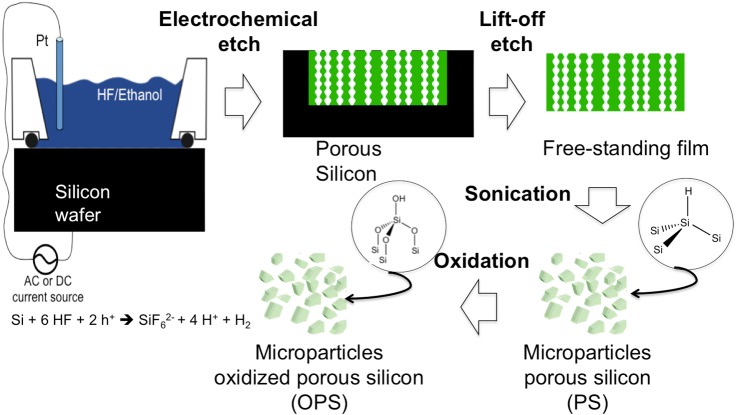Figure 1. .
Schematic diagram of the synthesis of porous silicon microparticles. The electrochemical etch cell and apparatus used, as well as the Si electro corrosion half-reaction responsible for porous Si formation, is shown. The synthesis of porous Si involves the electrochemical corrosion of a single crystal wafer. In the presence of an electrolyte containing hydrofluoric acid, electrochemical corrosion removes Si in the form of SiF62−, generating myriads of nanometer-scale pores. Pores nucleate uniformly across the surface of the Si wafer, and they propagate preferentially in the <100> crystallographic direction.15

